GIGABYTE GeForce RTX 4070 Ti Super Gaming OC 16GB Review
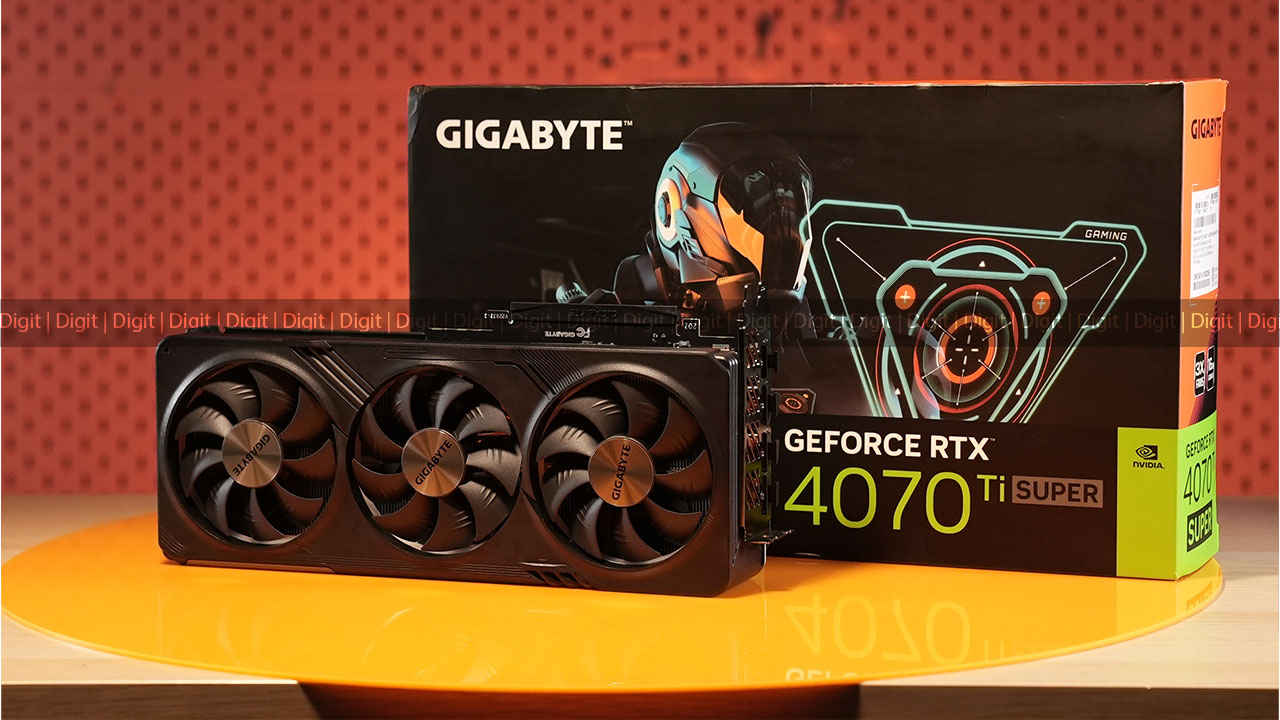
- Properly priced in India
- WINDFORCE Cooling does its job properly
- Has a Quiet BIOS switch
- Is a triple-slot card
- Power consumption is as much as the RTX 4080
The GIGABYTE GeForce RTX 4070 Ti Super Gaming OC 16 GB is a well-made 2K and 4K gaming graphics card with great Indian pricing. You don’t get to see that everyday. Performance-wise, the 4070 Ti Super easily beats the 4070 Ti and the 4070 Super by about 5 and 11 per cent, respectively. It also comes very close to the RX 7900 XT when it comes to raster performance. Overall, the RTX 4070 Ti is a pretty great buy.
Practically everyone who reads the name of a card such as the GIGABYTE RTX 4070 Ti Super Gaming OC 16GB always asks the same question – Super and Ti? Their bewilderment is understandable, after all, the two suffixes tend to indicate the same thing. Nevertheless, an RTX 4070 Ti Super is a thing and like all the other Super cards launched in January, it’s better than the non-Super cards and cheaper. But how good is it? We’ll get to that soon, before that, a history lesson.

When the first Ti cards came out as part of the GeForce 2 series back in 2001, the Ti stood for Titanium and was actually a step down. You see, the GeForce 3 cards had been launched and they were a bit expensive, so NVIDIA launched a cheaper and less powerful version of the GeForce 3 cards and called it the GeForce 2 Ti. When the GeForce 4 cards came out, Ti became a step up. The Ti cards were better than their counterparts which included the MX cards. And as time went on, the ‘Ti’ suffix disappeared for a few generations before making a comeback with the GTX 500 series. When the new RTX cards debuted with the RTX 20-series, NVIDIA was still working out some of the kinks in the silicon. So the first set of launches in 2018 followed the usual nomenclature with a Ti card in the mix. Nearly, a year after the launch, NVIDIA had a lot more fine-tuned architecture and a lot of silicon that needed to be sold. And so, we saw the birth of the Super cards which were better than vanilla card but not better than the Ti. So the order was – Vanilla < Super < Ti. And now, with the RTX 40-series we have an amalgamation of the two, in the form of the RTX 4070 Ti Super. Simply put, two suffixes are better than one and the Ti Super is way powerful than the vanilla card. Let’s have a look at the specs.
NVIDIA RTX 4070 Ti Super Specifications
The RTX 4070 Ti Super, unlike the other 4070 cards, is actually based on an AD103 GPU which is a slightly bigger chip with a lot more CUDA cores. The AD103 is also used by the RTX 4080 and the 4080 Super. We’ve got 6 Graphics Processing Clusters (GPC) with a total of 66 Streaming Multiprocessors (SM), which in turn, hold 8448 CUDA cores. That is a difference of 1280 CUDA cores compared to the 4070 Super and an equal number of cores fewer than the RTX 4080. It’s shader performance stands at 44 TeraFLOPs which is a cool 51 per cent higher than a vanilla RTX 4070. Compared to the 4080, that’s 18 per cent lesser and compared to the 4070 Ti, it’s 22 per cent higher.
| NVIDIA RTX 4070 Ti Super Specifications | ||||
| NVIDIA RTX 4080 | NVIDIA RTX 4070 Ti Super | NVIDIA RTX 4070 Super | NVIDIA RTX 4070 Ti | |
| Graphics Processing Cluster | 7 | 6 | 5 | 5 |
| Texture Processing Cluster | 38 | 33 | 28 | 30 |
| Streaming Multiprocessors | 76 | 66 | 56 | 60 |
| CUDA Cores | 9728 | 8448 | 7168 | 7680 |
| Shader FLOPS | 49 | 44 | 36 | 40 |
| Tensor Cores | 304 | 264 | 224 | 240 |
| AI TOPS | 780 | 705.6 | 568 | 706 |
| RT Cores | 76 | 66 | 56 | 60 |
| RT FLOPS | 113 | 102 | 82.1 | 93 |
| Texture Units | 304 | 264 | 224 | 240 |
| ROP Units | 112 | 96 | 80 | 80 |
| Base Clock | 2205 MHz | 2340 MHz | 1980 MHz | 2310 MHz |
| Boost Clock | 2505 MHz | 2610 MHz | 2475 MHz | 2610 MHz |
| Memory Clock | 1400 MHz | 1313 MHz | 1313 MHz | 1313 MHz |
| Memory Data Rate | 22.4 Gbps | 21 Gbps | 21 Gbps | 21 Gbps |
| L1 Cache per SM / Array | 128 KB | 128 KB | 128 KB | 128 KB |
| L2 Cache Size | 64 MB | 48 MB | 48 MB | 48 MB |
| Total Video Memory | 16 GB | 16 GB | 12 GB | 12 GB |
| Video Memory Type | GDDR6X | GDDR6X | GDDR6X | GDDR6X |
| Memory Interface | 256-bit | 256-bit | 192-bit | 192-bit |
| Total Memory Bandwidth | 716.8 GB/s | 672.3 GB/s | 504 GB/s | 504 GB/s |
| Process Node | TSMC 4N | TSMC 4N | TSMC 4N | TSMC 4N |
| Total Graphics Power | 320 W | 285 W | 220 W | 285 W |
Similarly, we see the Tensor Core counts, RT Core counts, Texture Units, etc. are all right down the middle between the RTX 4080 and the 4070 Super. But clock speeds are actually much higher. The RTX 4070 Ti Super has a base clock of 2340 MHz and a boost clock of 2610 MHz which is higher than the RTX 4080 as well as the 4070 Super. So synthetic benchmarks will see the RTX 4070 Ti Super leaning closer to the RTX 4080 but will real-world gaming also exhibit similar performance trends?
GIGABYTE RTX 4070 Ti Super Gaming OC Build Quality
The GIGABYTE GeForce RTX 4070 Ti SUPER GAMING OC 16G is a pretty beefy card. With a width of 57.6 mm, this is a triple slot card and most of it is the cooling solution. The body uses a mix of metal and plastic with more metal than previous cards that we’ve seen. It is also 130 mm tall, so the card has a pretty dominating presence inside your chassis. The design, however, is blocky with not much of a visual appeal. GIGABYTE’s AERO and MASTER cards look much better, but they too are pretty bulky.

The cooling assembly has multiple layers, as usual. We start with a massive metal plate at the very bottom which is mostly copper. There’s no vapour chamber in this card. You’ll find that on the That’s attached to the monoblock through which eight composite copper heat pipes emerge. These heatpipes split up into two groups and each group goes into a separate heatsink that has nice thick fins. The fins aren’t floating freely, there are support bars to keep them in place and add some rigidity to the build. And on top of the heatsink sit three fans and the fan shroud. Speaking of which, all fans are 90 mm and the fan shroud is made of plastic. You’ve got RGB lighting behind a logo that sits on the top of the card and the inner rim of the fans also have ring RGB lights which look pretty snazzy in the dark. The RGB implementation is not too outlandish and at the same time it doesn’t come off as muted.
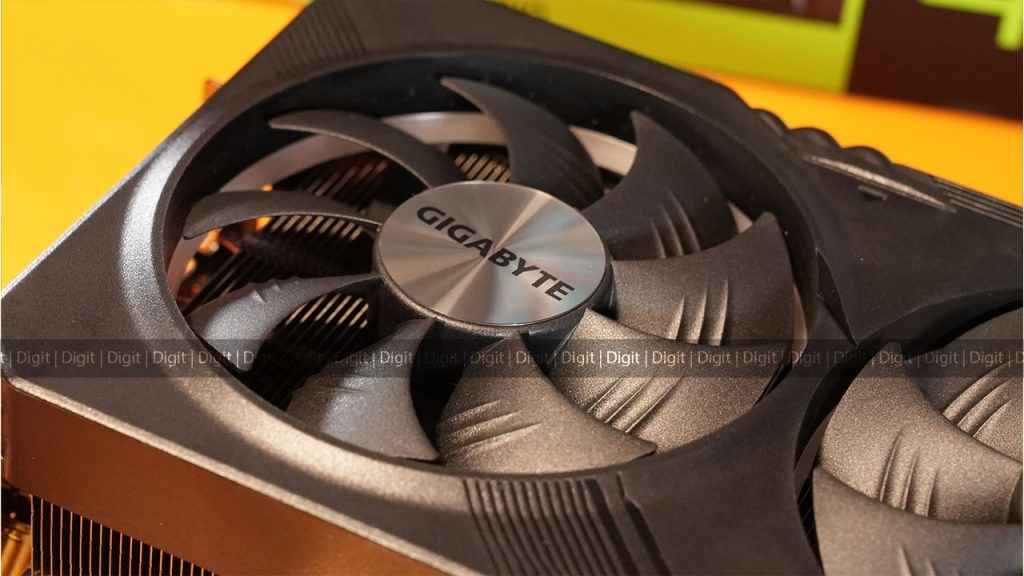
GIGABYTE calls their cooling assembly WINDFORCE and it’s made up of three fans like we mentioned previously. The shroud is fairly open on all sides so there’s plenty of place for the hot air to vent from the card. There’s also a massive cut out on the backplate to allow hot air to push through with little resistance. Also, the backplate is metal. GIGABYTE has included a neat little bracket which can be attached to the backplate and then hooked into one of the mount holes for the motherboard for a little extra support. There is, obviously, a caveat regarding compatibility because you chassis needs to have support for ATX boards and that you have 14 cm of clearance from the bracket to the front of the chassis. You should check the entire list of caveats on the official website.
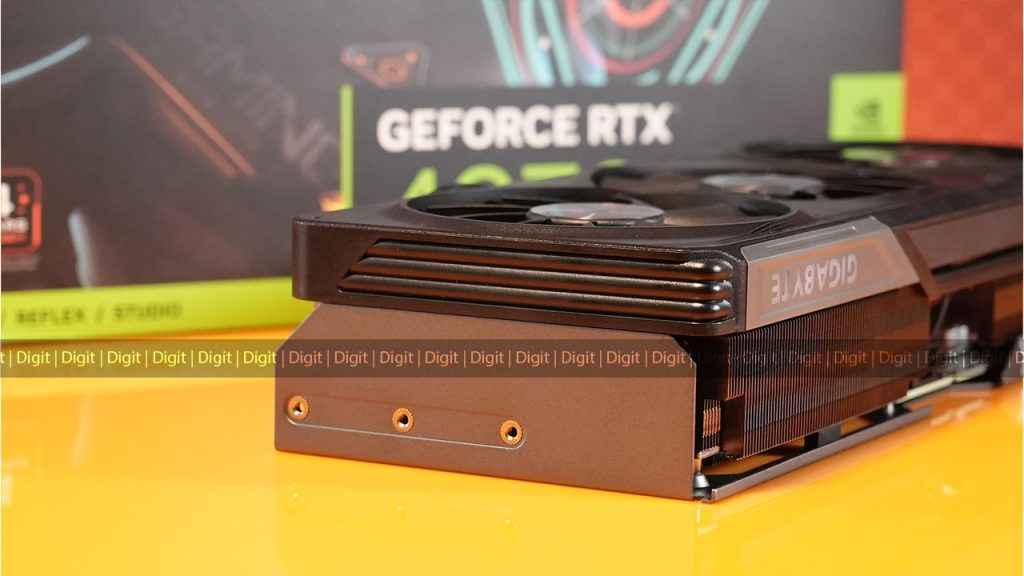
The top side of the card has a slight cutout where the power connector and the BIOS switch are located. Most graphics card manufacturers have opted to use the 12VHPWR connector over the older 8-pin PCIe connectors even though it has a lower safety rating. The 12VHPWR connectors are more compact and have a limited lifespan of up to 30-40 mating cycles. Most folks do not connect and disconnect connectors this often so it is a non-issue but if you happen to fall in the other category, then you should always be careful until PCI-SIG comes up with a better design.
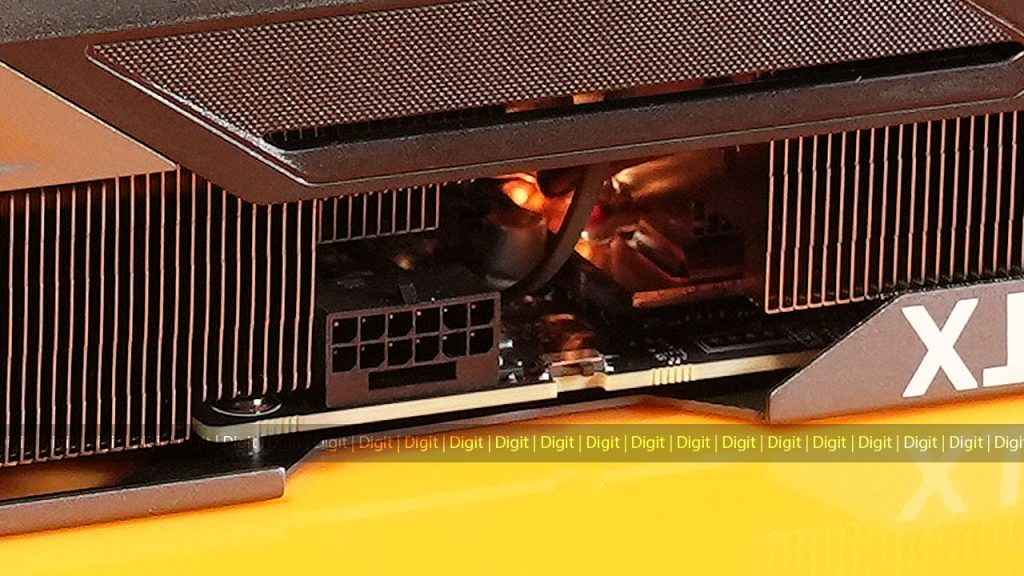
Coming to the I/O ports, you have a standard arrangement with 1x HDMI and 3x DisplayPorts on the card and they all appear to have a corrosion resistant plating on them.
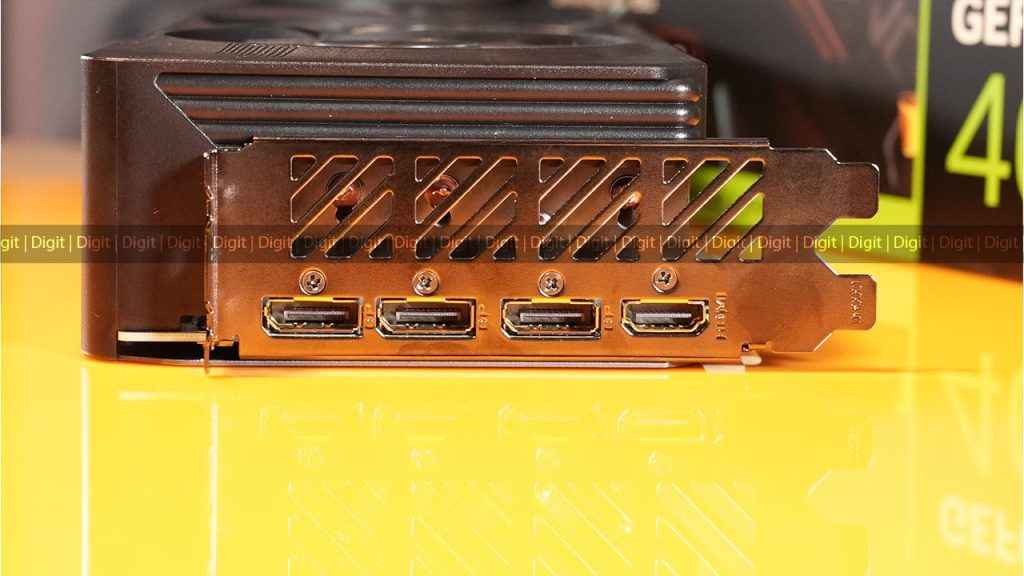
The GIGABYTE GeForce RTX 4070 Ti SUPER GAMING OC 16G graphics card is a nicely built card which in our tests was shown to operate at fairly decent temperatures. The addition of the anti-sag bracket is a definite improvement and GIGABYTE is offering a 4-year warranty on the card. You get three years as the base warranty with an additional year added provided you register the card on their website. It’s not as good as what ZOTAC offers but it’s still a consumer-friendly initiative.
Performance
The card is being compared against only the recently re-tested graphics cards and not any of the older graphics cards that are no longer available with us. Here’s the rig it was tested on.
TEST RIG
Processor – Intel Core i9 14900K
CPU Cooler – AORUS WATERFORCE X II 360
Motherboard – GIGABYTE Z790 AORUS MASTER X
RAM – 2x 16 GB Kingston Renegade FURY 6000 MT/s (Set to 5200 MT/s)
SSD – Lexar NM760 1 TB NVMe SSD
PSU – Cooler Master MWE 850 V2 Gold
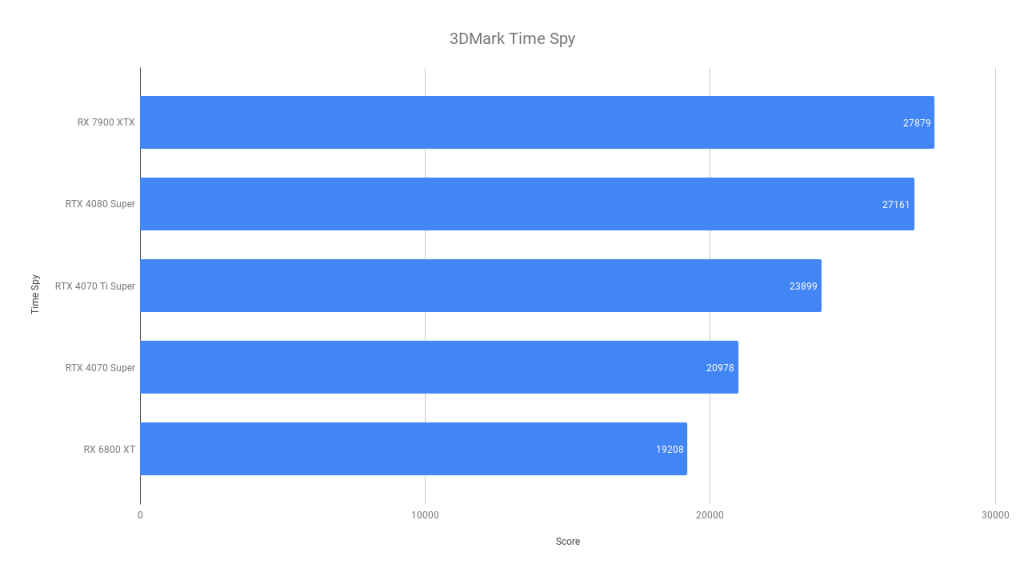
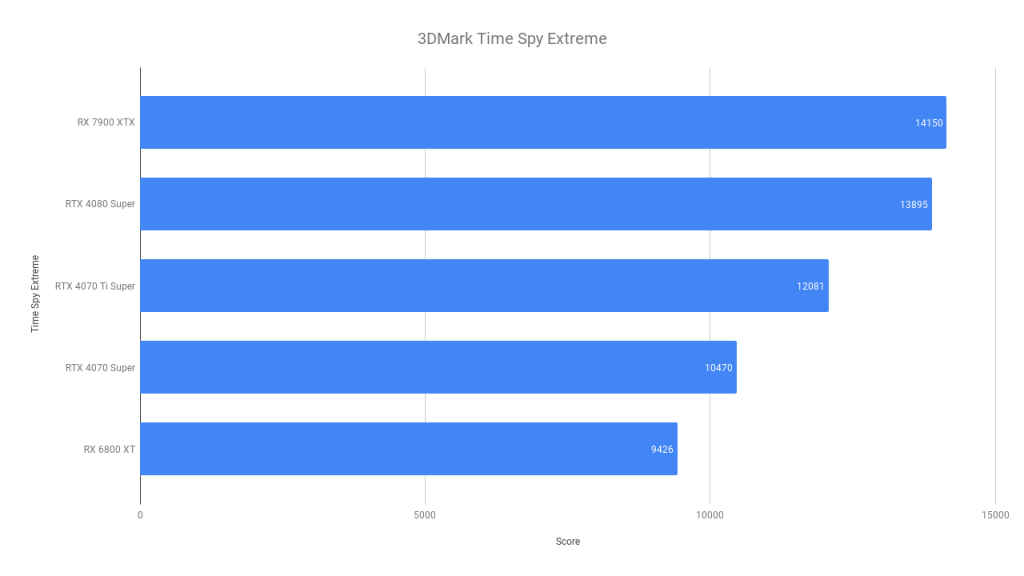
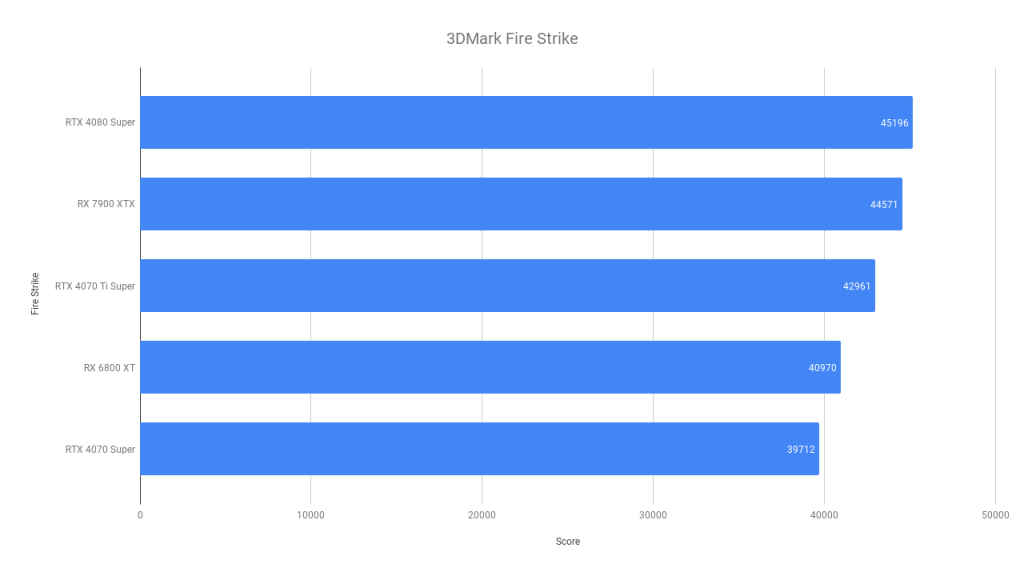
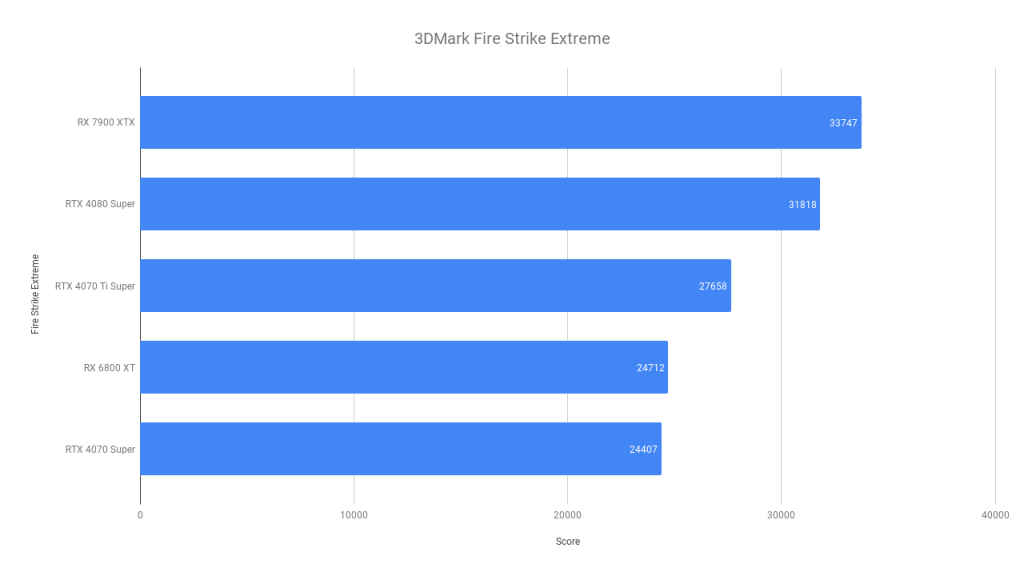
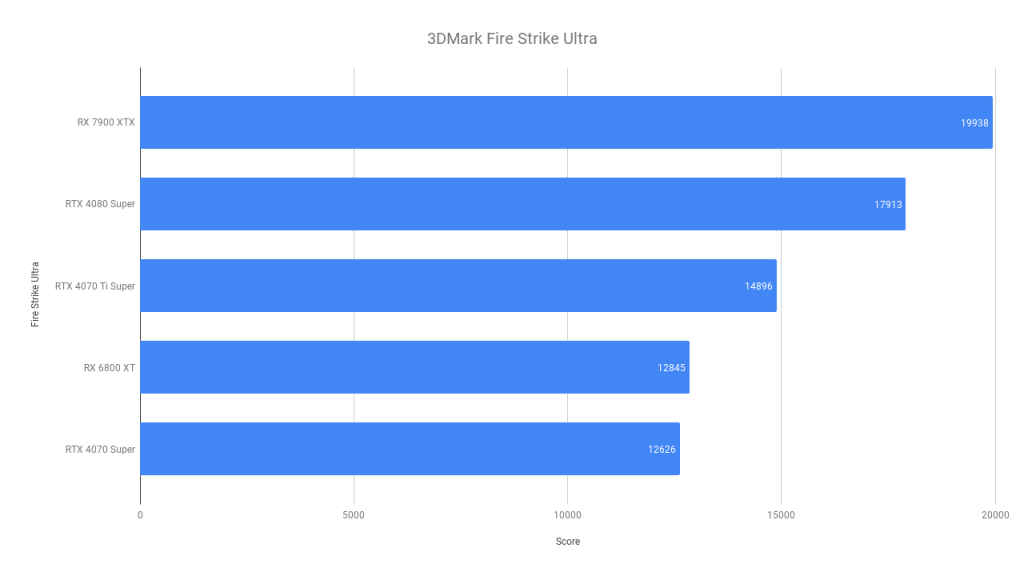
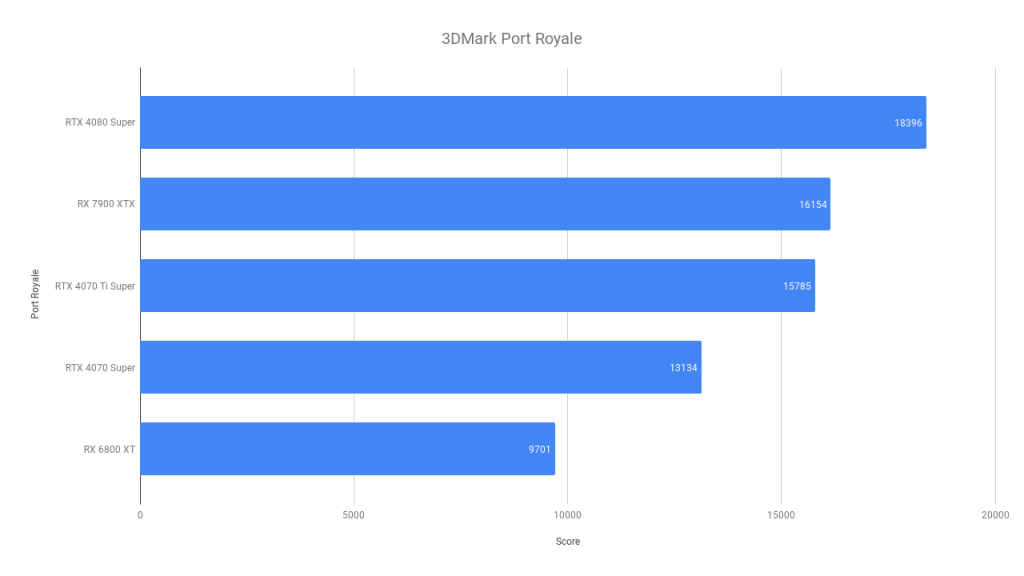
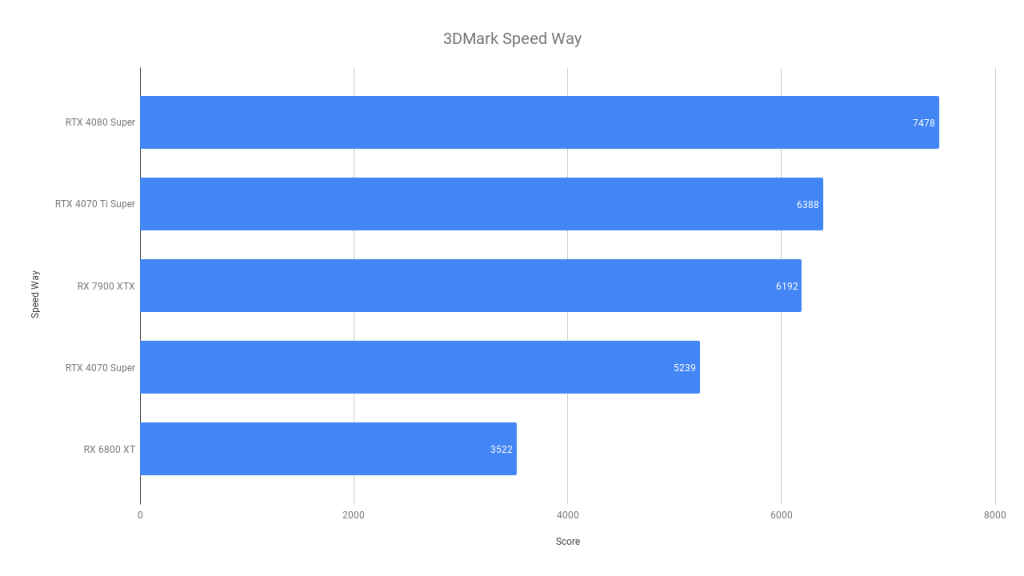
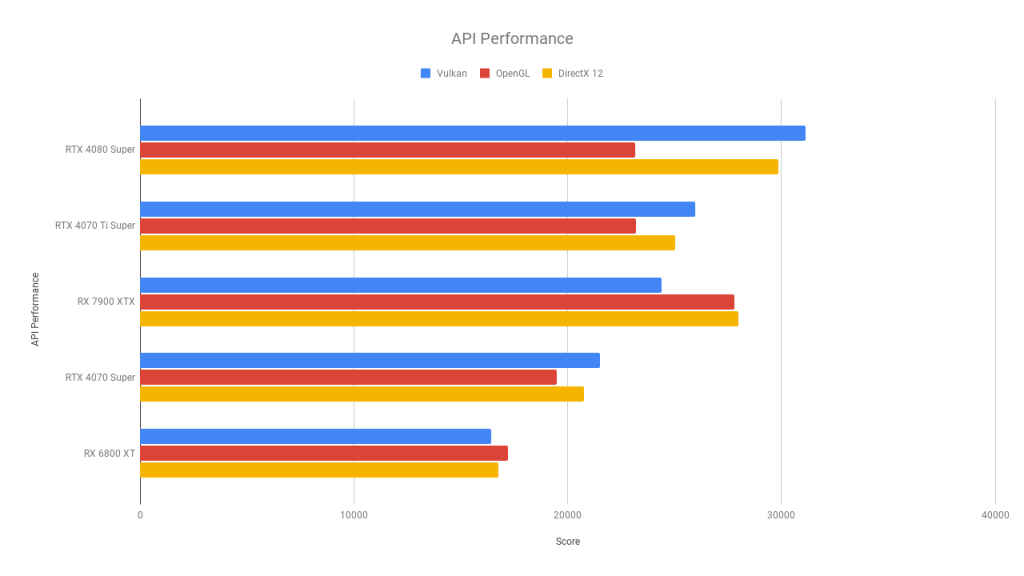
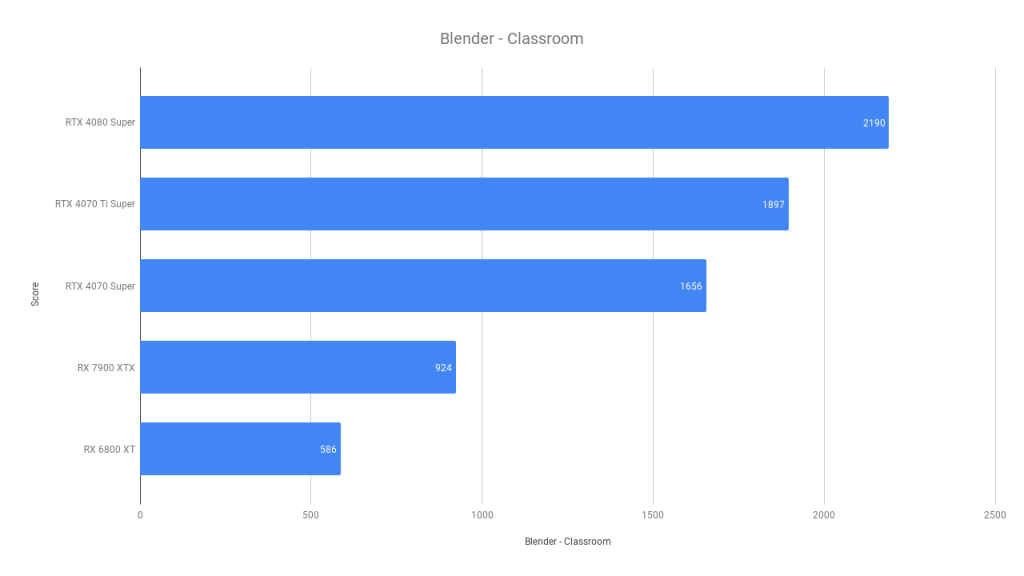
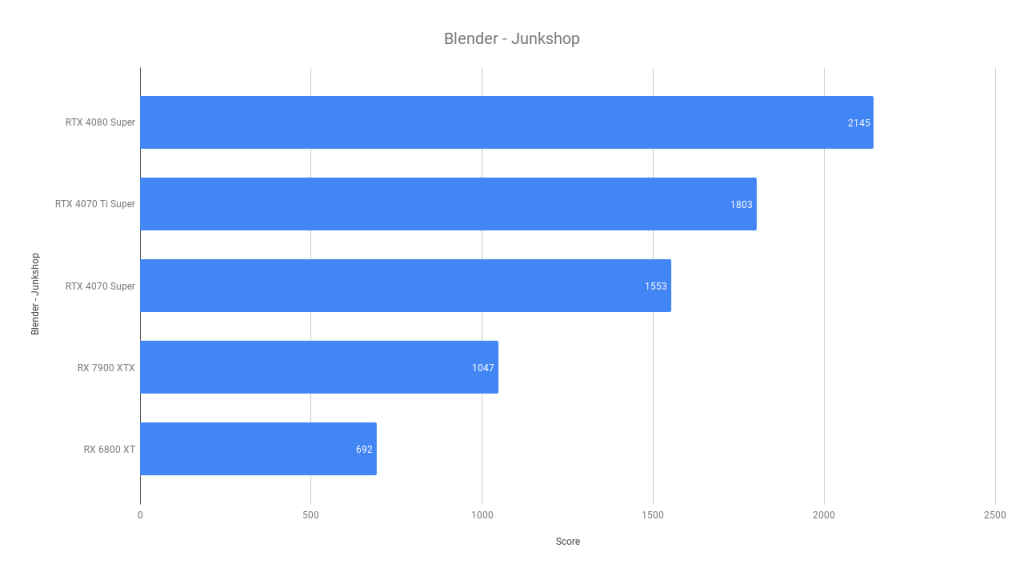
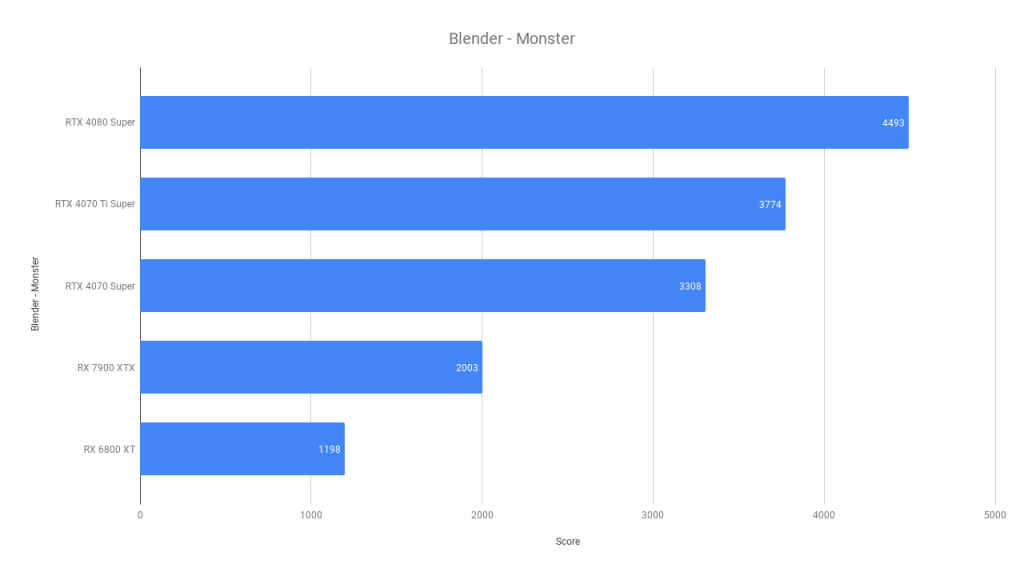
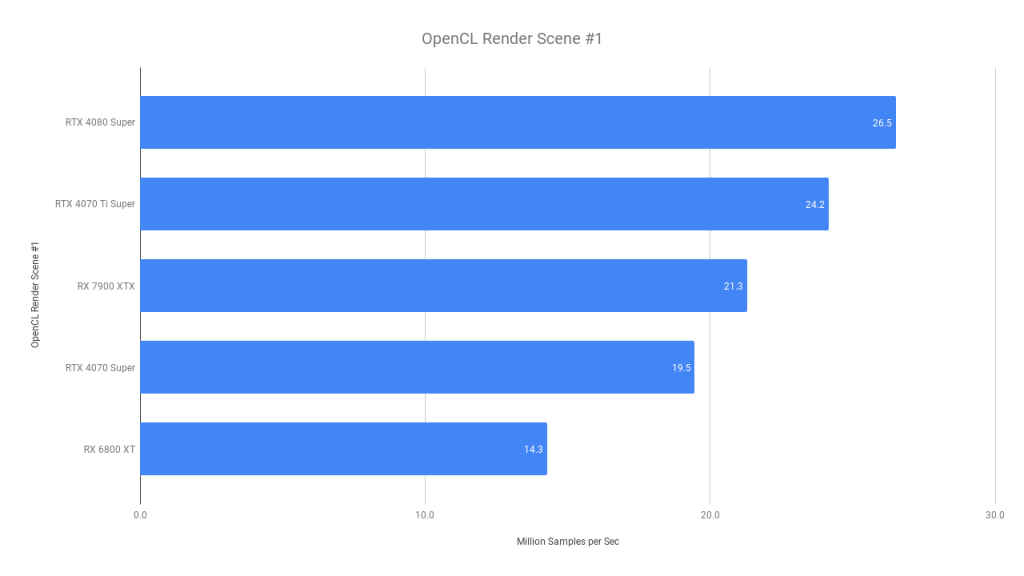
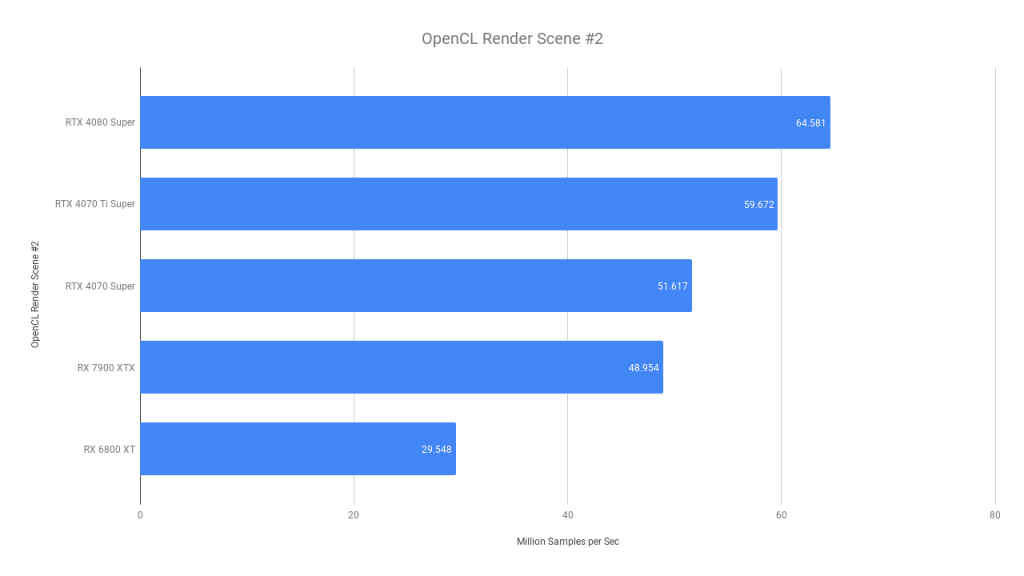
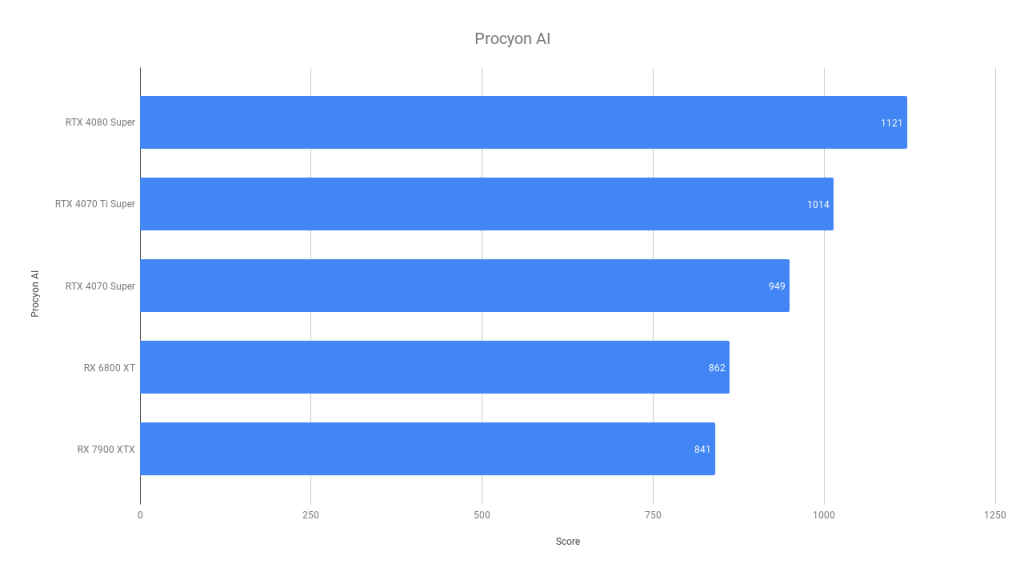
Power consumption and Temperatures
The WINDFORCE cooling on the GIGABYTE GeForce RTX 4070 Ti Super card works without any quirks whatsoever. Peak temperatures were about 64 degrees Celsius and peak power consumption was around 303-306 watts. This is about 30 watts more than the RTX 4070 Ti and just about the same as the RTX 4080.
Pricing and Availability
Official pricing for the NVIDIA RTX 4070 Ti Super stands at INR 84,000 but there are no Founders Edition cards for the 4070 Ti Super, so you can only buy partner cards such as the GIGABYTE GeForce RTX 4070 Ti Super Gaming OC 16 GB. We found the card available on all popular PC parts stores in India for INR 83,000-84,090 on the lower side which is pretty good and shows that GPU prices have normalised in the country for some class of cards.
Verdict
The GIGABYTE GeForce RTX 4070 Ti Super Gaming OC 16 GB is a well-made 2K and 4K gaming graphics card with great Indian pricing. You don’t get to see that everyday. Performance-wise, the 4070 Ti Super easily beats the 4070 Ti and the 4070 Super by about 5 and 11 per cent, respectively. It also comes very close to the RX 7900 XT when it comes to raster performance. Overall, the RTX 4070 Ti is a pretty great buy.
GIGABYTE GeForce RTX 4070 Ti SUPER GAMING OC 16G Graphics Card Key Specs, Price and Launch Date
| Release Date: | |
| Market Status: | Launched |
Mithun Mohandas
Mithun Mohandas is an Indian technology journalist with 14 years of experience covering consumer technology. He is currently employed at Digit in the capacity of a Managing Editor. Mithun has a background in Computer Engineering and was an active member of the IEEE during his college days. He has a penchant for digging deep into unravelling what makes a device tick. If there's a transistor in it, Mithun's probably going to rip it apart till he finds it. At Digit, he covers processors, graphics cards, storage media, displays and networking devices aside from anything developer related. As an avid PC gamer, he prefers RTS and FPS titles, and can be quite competitive in a race to the finish line. He only gets consoles for the exclusives. He can be seen playing Valorant, World of Tanks, HITMAN and the occasional Age of Empires or being the voice behind hundreds of Digit videos. View Full Profile


